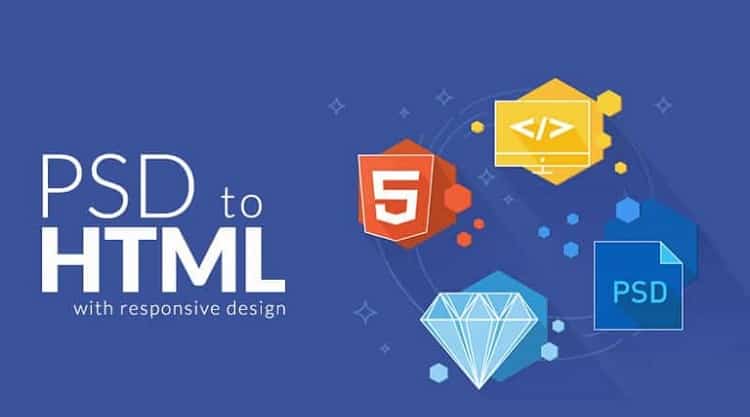Bootstrap is one of the most popular front-end frameworks for web development. In the current web development scenario, developing the front-end template with Bootstrap has become a trend. It is not that you cannot build a web template without Bootstrap, but it makes the development easy and perfect for different devices to surf the website in the best possible way. In fact, the main reason for the rise in the popularity of Bootstrap is its responsive design concept. The framework has been developed by Twitter, and they did for the faster development of their platform saving time and effort and making future expansion possible easily.
Reasons for choosing Bootstrap for PSD to HTML Conversion –
There are various ways to convert PSD to HTML but using Bootstrap makes the process easy. Bootstrap is a CSS framework, and there is a lot of reusable and documented CSS and JS already available that you can use to make the conversion super easy. There is no more of repetitive actions to be taken. You will get the responsive design which is essential in today’s web development. Besides, there is going to be consistency in your overall design. You can also prototype designs with a few less time. Moreover, it creates the much-needed consistency between developers. Most importantly, there is no hassle in the framework, and you can easily build a functional and responsive HTML template.
Features that make Bootstrap perfect for conversion –
The template you get after converting PSD to HTML using Bootstrap framework is going to have a mobile-first approach. We all know that search engines prefer mobile-first websites because there are more mobile users than desktop users. Therefore, you have a higher chance of getting a higher rank. Secondly, the template comes with a powerful grid system, and we all know the importance of a grid system for a template especially for different features and future editing and scalability.
The image scaling is also possible due to Bootstrap. The internal consistency will be better than any other template. The most important feature is that the customization possibilities in the future are perfectly taken care of. Every website needs to be edited and customized in the future to go with the trend, and it becomes easy with a Bootstrap template. Apart from these, the template will enable your website for easy integration with different platforms. Moreover, there are many pre-styled components available to instant use.
Converting PSD To HTML Using Bootstrap –
For designing any new website template, the first step is to design it in Photoshop and then convert it into HTML for the web developers. Therefore, consistency in design is maintained, and the clients get to choose from multiple options. The tweaking of design can be done easily before converting it to HTML for web development.
The steps for converting PSD to HTML using Bootstraps are very simple. First, you have to slice the layered PSD file containing the web template design. Then you have to download Bootstrap and unzip it. Create index.html and style.css for the template. In the index.html file, you have to initiate Bootstrap in the Head section, and you have to initiate JavaScript in Body section of index.html. Then you have to use the available component in Bootstrap in your HTML template. Therefore, it is essential for you to have complete knowledge of the components available in Bootstrap and where to use those components for faster web template development.
Step 1 – Assuming that you have the PSD file ready with the web design, you need to slice that layered PSD to HTML. This means that all the individual images must be in separate JPG or PNG file. Make sure that there is no text is converted to image except the headings as text cannot be an image in the web template. The text has to be added through HTML so that it is readable by search engines.
Step 2 – Make sure that there are not too many image files because the loading time will suffer as multiple HTTP requests have to be sent to over them one by one. In case, there are too many image files, you have to create CSS Sprite. This controls the images to be displayed as and when required. Therefore, the burden is lessened to some extent.
Step 3 – This is the crucial step where you have to code out in HTML using Bootstrap CSS and JS. You should have a separate header, body, sidebar, and footer. In the header section, the logo and menu and another call to action buttons must be present. You should separate every section using <section> tag. There should be definite CSS for each tag, but there should not be any repetition. Try to modularize CSS code for reusability wherever possible.
There are various websites available to learn Bootstrap like w3schools which you may need for the third steps. Besides, there are many tools available which you can use for initial conversion and edit out the parts for perfection. Moreover, you can hire an expert freelancer to do it for you.

